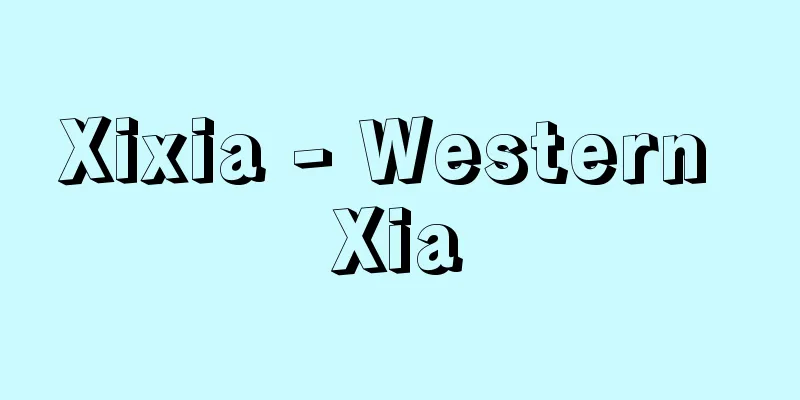PPBS - PPBS

|
It is an abbreviation for planning-programming-budgeting system, and is a budgeting system characterized by an organic relationship between long-term planning and single-year budget preparation, preparation of budgets based on expenditure objectives called programs, and systematic analysis and consideration of priorities for the entire system. As the public sector expanded, competition with the private sector in the use of scarce resources increased, but at the same time, interest in efficiency within the public sector also grew. In the United States, this led to a series of budgetary reforms, one of which was the PPBS, which was introduced to the Department of Defense when Secretary of Defense McNamara took office in 1961, and then to all ministries and agencies by President Johnson in 1965. However, despite being a theoretically very rational system, it was abolished in 1971 by a notice from the Office of Budget Management Director Shultz of the Nixon administration, due to various reasons including various administrative difficulties in its implementation and a lack of cooperation from Congress, which was concerned about the increasingly strong power of the executive branch. The PPBS is based on reflection on and aims to correct the deficiencies of the traditional budget formulation process and the parliamentary budget deliberation process. The following deficiencies of the traditional budget were pointed out: (1) Little attention to long-term planning. (2) Too much attention was paid to minor matters, and not enough attention was paid to clarifying basic national objectives or selecting alternative means to achieve them. (3) Most expenditure plans are classified by administrative agency, not by function or business. (4) The objectives set forth by administrative organizations are rarely expressed in measurable units. (5) There is a large discrepancy between administrative structures and actual administrative needs. (6) Budgets are not used to evaluate the performance of administrative agencies. (7) The problem of efficiently allocating scarce resources remains unresolved. To correct these deficiencies in traditional budgets, the PPBS has the following features: [1] It clearly and continuously identifies the government's basic goals. [2] It selects the most urgent of those goals. [3] It develops and selects alternative ways to most efficiently achieve those goals at the least cost. [4] It identifies not only the costs for the next fiscal year, but also the costs of business plans spanning several years. [5] It measures the performance of business plans and aims to provide government services that are worth the amount spent. To achieve these objectives, PPBS organizes budget items according to a hierarchy of objectives called programs, or the business activities necessary to achieve them. PPBS also places emphasis on developing alternative plans and comparing and evaluating them, and makes extensive use of analytical methods such as cost-benefit analysis and systems analysis to achieve these objectives. In addition, to organically link long-term objectives with each year's budget and to conduct continuous reviews, a method known as the rolling method is adopted, in which the content of business activities and cost estimates for the next five years are incorporated. The current year's budget corresponds to the content of the first year, and the following year it rolls over one year to cover the new five-year period. [Masatoshi Hayashi] "Basic Knowledge of PPBS" edited by Taro Kaneko (1969, Institute of Financial Affairs)" ▽ "Principles and Analysis of PPBS" edited by Kimio Miyagawa (1969, Yuhikaku)" ▽ "PPBS and Budget Decision-Making" by C.L. Schultz, translated by Masazo Okawa and Takashi Kato (1971, Japan Management Publishing Association)" [References] |Source: Shogakukan Encyclopedia Nipponica About Encyclopedia Nipponica Information | Legend |
|
planning-programming-budgeting systemの略であり、長期計画策定と単年度の予算編成との有機的関係づけ、プログラムとよばれる支出目的表示での予算の編成、全体を対象に組織的に優先順位を分析・検討するなどの特徴を有する予算制度である。 公共部門の拡大に伴って希少資源の利用面での民間部門との競合性が増大したが、それとともに公共部門における効率性に対する関心も高まった。アメリカにおいてはこのために予算制度の改革が次々と実施されたが、その一つとして、PPBSが、1961年のマクナマラ国防長官の就任とともに国防総省に、さらに65年にはジョンソン大統領により全省庁に導入された。しかし、理論的にはきわめて合理的な制度であるにもかかわらず、その実施には行政的にさまざまな困難が伴ったことと、行政部の権限がますます強大化することを懸念する議会の協力を欠いたことなどの理由により、71年にはニクソン政権のシュルツ予算管理庁長官の通達により廃止された。 PPBSは、伝統的予算編成過程ならびに議会の予算審議過程における諸欠陥についての反省に基づき、その是正を目的としているが、伝統的予算の欠陥として次のような点が指摘された。〔1〕長期的計画をたてることへの関心が低い。〔2〕些末(さまつ)な事柄に注意を払いすぎるために、基本的国家目標の明確化やそれらの達成のための代替的手段の選択に十分な注意が注がれていない。〔3〕大部分の支出計画は行政機関別に分類され、機能別または事業別に分類されていない。〔4〕行政組織の掲げる諸目的が、測定可能な単位によって表示されることがほとんどない。〔5〕行政機構と現実の行政的必要との間の不一致が大きい。〔6〕行政機関の活動実績を評価するために予算が利用されていない。〔7〕希少資源を効率的に配分するための問題が未解決のままである。 このような伝統的予算の欠陥を是正すべく、PPBSは以下のような特徴を有する。〔1〕政府の基本目標を明確にかつ継続的に明らかにする。〔2〕それらの目標のなかで、もっとも緊要なものを選択する。〔3〕それらの目標を最小の費用でもっとも効率的に達成する代替的方法を開発し、選択する。〔4〕次年度の費用のみならず、数年度にわたる事業計画の費用を明らかにする。〔5〕事業計画の実績を測定し、支出額に対応する価値の政府サービスが提供されることを目ざす。 これらの目的を達成するために、PPBSでは、プログラムとよばれる目的またはそれを達成するために必要な事業の階層により、予算項目が組織される。また、PPBSでは代案の開発とそれらの比較評価を重視するが、そのために費用・便益分析、システム分析という分析手段を多用する。また、長期目的と各年度の予算編成を有機的に関連づけ、継続的見直しを行うために、ローリング方式とよばれる方式を採用し、将来5年間にわたる事業内容および費用の見積りが折り込まれる。当年度予算はその1年目の内容に対応し、翌年度には1年ローリングして新たな5年間が対象とされる。 [林 正寿] 『金子太郎編『PPBSの基礎知識』(1969・金融財政事情研究会)』▽『宮川公男編著『PPBSの原理と分析』(1969・有斐閣)』▽『C・L・シュルツ著、大川政三・加藤隆司訳『PPBSと予算の意思決定』(1971・日本経営出版会)』 [参照項目] |出典 小学館 日本大百科全書(ニッポニカ)日本大百科全書(ニッポニカ)について 情報 | 凡例 |
>>: PPP - phased project planning
Recommend
Nubecula
… Normal urine is clear immediately after urinati...
butt
…Hides are the skins of large animals (such as ca...
Don Juan
A legendary figure from Spain who was as prevalent...
Dhvaja
...the Sanskrit word patākā is used to refer to a...
Abnormally low temperature
...The hotter the summer, the greater the increas...
Sake Brewing Song - Sake Brewing Song
Also called "sakaya-uta," these are labo...
Idehara
This plain stretches from 800 to 1100 meters abov...
direct voltage
…Current with a constant magnitude and direction....
Right to indemnity
This is a right to claim reimbursement, which is ...
Electron tube
An electronic component that utilizes electrons e...
gradient wind
...the westerly winds over the mid-latitudes, kno...
Sayf al-Din Ghazi (English spelling)
…In 1127, Zengi was appointed governor of Mosul a...
Acebotoxin - Acebotoxin
…It is a poisonous plant, and when cattle and hor...
Boxwood - Boxwood
An evergreen small tree of the Buxaceae family (A...
Awabunegai - Awabunegai (English spelling) slipper shell
A gastropod shell of the family Caribagatidae in ...









